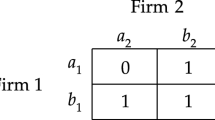Abstract
The distinction between harm that is intended as a means or end, and harm that is merely a foreseen side-effect of one’s action, is widely cited as a significant factor in a variety of ethical contexts. Many use it, for example, to distinguish terrorist acts from certain acts of war that may have similar results as side-effects. Yet Bennett and others have argued that its application is so arbitrary that if it can be used to cast certain harmful actions in a more favorable light, then it can equally be manipulated to do the same for any kind of harmful action. In response, some have tried to block such extensions of the intend/foresee distinction by rejecting its application in cases where the relation between the plainly intended means and the harm is “too close”. This move, however, has been attacked as vague and obscure, and Bennett has argued that all the plausible candidates for explicating the idea of excessive closeness ultimately fail. In this paper, I develop and defend an account of excessive closeness with the aim of rescuing the intend/foresee distinction from such charges of arbitrariness. The account is based on the distinction between merely causal and constitutive relations among states of affairs, and I show both how it escapes Bennett’s objections to other accounts and how it applies to a variety of cases. Finally, I also examine Quinn’s alternative move of shifting the focus of the intend/foresee distinction in an attempt to sidestep the issue of closeness, and argue that it is not ultimately successful. In fact, Quinn’s view has shortcomings that can be resolved only by returning to an appeal to some notion of closeness, underscoring the need for the sort of account I offer.
Similar content being viewed by others
References
G.E.M. Anscombe (1963) Intention EditionNumber2 Blackwell Oxford
G.E.M. Anscombe (2001) ‘Medalist’s Address: Action, Intention and ‘Double Effect” P.A. Woodward (Eds) The Doctrine of Double Effect University of Notre Dame Press Notre Dame 50–66
J. Bennett (1981) Morality and Consequences, The Tanner Lectures on Human Values II University of Utah Press Salt Lake City 45–116
J. Bennett (1995) The Act Itself Oxford University Press Oxford
D. Davidson (1980) Essays on Actions and Events Oxford University Press Oxford
N. Delaney (2001) ArticleTitle‘To Double Business Bound: Reflections on the Doctrine of Double Effect’ American Catholic Philosophical Quarterly 75 IssueID4 561–584
J.M. Fischer M. Ravizza D. Copp (2001) ‘Quinn on Double Effect: The Problem of ‘Closeness” P.A. Woodward (Eds) The Doctrine of Double Effect University of Notre Dame Press Notre Dame 189–210
P. Foot (1994a) ‘The Problem of Abortion and the Doctrine of the Double Effect’ B. Steinbock A. Norcross (Eds) Killing and Letting Die Fordham University Press New York 266–279
P. Foot (1994) ‘Killing and Letting Die’ B. Steinbock A. Norcross (Eds) Killing and Letting Die EditionNumber2 Fordham University Press New York 280–289
W.J. FitzPatrick (2003) ArticleTitle‘Surplus Embryos, Non-Reproductive Cloning, and the Intend/Foresee Distinction’ The Hastings Center Report 33 IssueID3 29–36
W.J. FitzPatrick (2003) ArticleTitle‘Acts, Intentions, and Moral Permissibility: In Defense of the Doctrine of Double Effect’ Analysis 63 IssueID4 317–321
F. Kamm (1992) ArticleTitle‘Non-consequentialism, the Person as an End-in-Itself, and the Significance of Status’ Philosophy and Public Affairs 21 IssueID4 354–389
F. Kamm (1996) Morality, Mortality Vol. II: Rights , Duties and Status Oxford University Press Oxford
Nagel, T. (1979). ‘War and Massacre’, in Mortal Questions, Cambridge: Cambridge University Press, 53–74.
T. Nagel (1986) The View From Nowhere Oxford University Press New York
Quinn, W. (1993a). ‘Actions, Intentions, and Consequences: The Doctrine of Doing and Allowing’, in Morality and Action, Cambridge: Cambridge University Press, pp. 149–174.
Quinn, W. (1993b). ‘Actions, Intentions and Consequences: The Doctrine of Double Effect’, reprinted in Morality and Action, Cambridge: Cambridge University Press, pp. 175–193.
J. Rachels (1994) ‘More Impertinent Distinctions and a Defense of Active Euthanasia’, reprinted B. Steinbock A. Norcross (Eds) Killing and Letting Die EditionNumber2 Fordham University Press New York 139–154
Thomson, J.J. (1986). ‘The Trolley Problem’, in Rights, Restitution and Risk: Essays in Moral Theory, Cambridge, Harvard University Press.
J.J. Thomson (1999) ArticleTitle‘Physician-Assisted Suicide: Two Moral Arguments’ Ethics 109 497–518 Occurrence Handle10.1086/233919
Author information
Authors and Affiliations
Corresponding author
Rights and permissions
About this article
Cite this article
Fitzpatrick, W.J. The Intend/Foresee Distinction and the Problem of “Closeness”. Philos Stud 128, 585–617 (2006). https://doi.org/10.1007/s11098-004-7824-z
Issue Date:
DOI: https://doi.org/10.1007/s11098-004-7824-z




